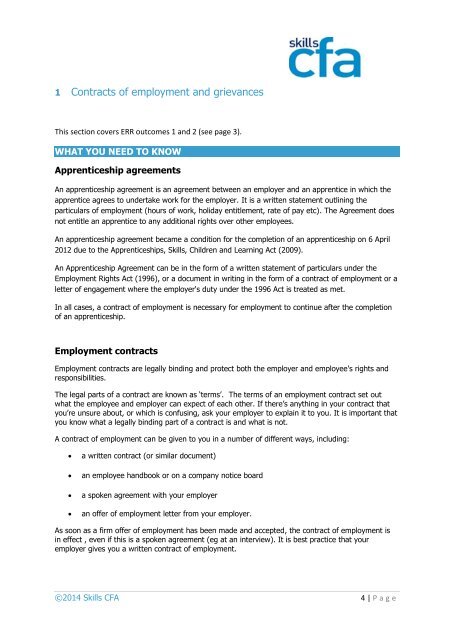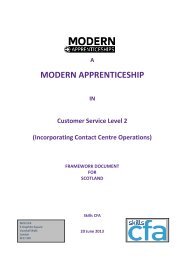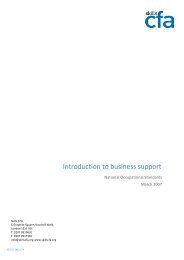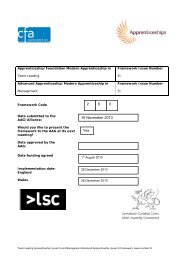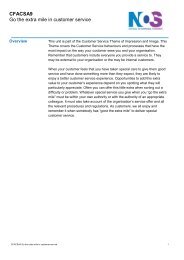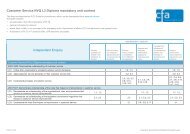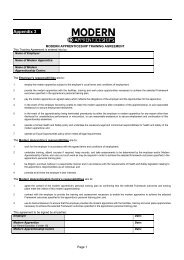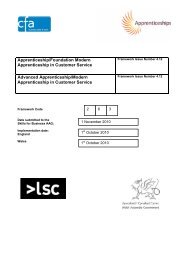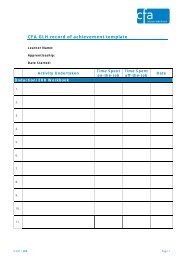(ERR) workbook - Skills CFA
(ERR) workbook - Skills CFA
(ERR) workbook - Skills CFA
Create successful ePaper yourself
Turn your PDF publications into a flip-book with our unique Google optimized e-Paper software.
1 Contracts of employment and grievances<br />
This section covers <strong>ERR</strong> outcomes 1 and 2 (see page 3).<br />
WHAT YOU NEED TO KNOW<br />
Apprenticeship agreements<br />
An apprenticeship agreement is an agreement between an employer and an apprentice in which the<br />
apprentice agrees to undertake work for the employer. It is a written statement outlining the<br />
particulars of employment (hours of work, holiday entitlement, rate of pay etc). The Agreement does<br />
not entitle an apprentice to any additional rights over other employees.<br />
An apprenticeship agreement became a condition for the completion of an apprenticeship on 6 April<br />
2012 due to the Apprenticeships, <strong>Skills</strong>, Children and Learning Act (2009).<br />
An Apprenticeship Agreement can be in the form of a written statement of particulars under the<br />
Employment Rights Act (1996), or a document in writing in the form of a contract of employment or a<br />
letter of engagement where the employer's duty under the 1996 Act is treated as met.<br />
In all cases, a contract of employment is necessary for employment to continue after the completion<br />
of an apprenticeship.<br />
Employment contracts<br />
Employment contracts are legally binding and protect both the employer and employee's rights and<br />
responsibilities.<br />
The legal parts of a contract are known as ‘terms’. The terms of an employment contract set out<br />
what the employee and employer can expect of each other. If there’s anything in your contract that<br />
you’re unsure about, or which is confusing, ask your employer to explain it to you. It is important that<br />
you know what a legally binding part of a contract is and what is not.<br />
A contract of employment can be given to you in a number of different ways, including:<br />
<br />
<br />
<br />
<br />
a written contract (or similar document)<br />
an employee handbook or on a company notice board<br />
a spoken agreement with your employer<br />
an offer of employment letter from your employer.<br />
As soon as a firm offer of employment has been made and accepted, the contract of employment is<br />
in effect , even if this is a spoken agreement (eg at an interview). It is best practice that your<br />
employer gives you a written contract of employment.<br />
©2014 <strong>Skills</strong> <strong>CFA</strong> 4 | P a g e


